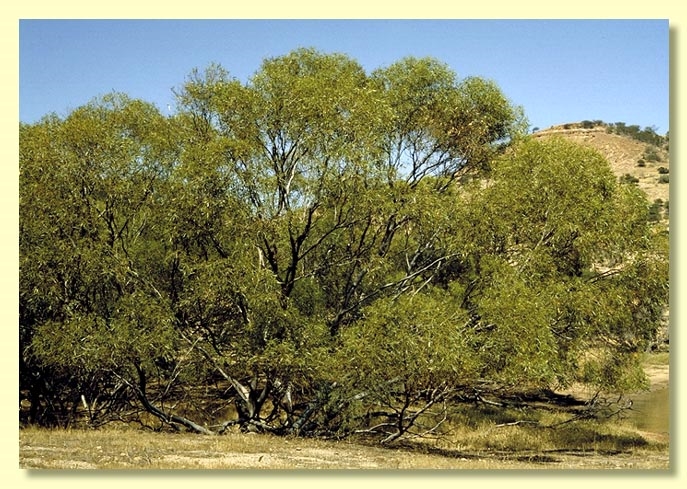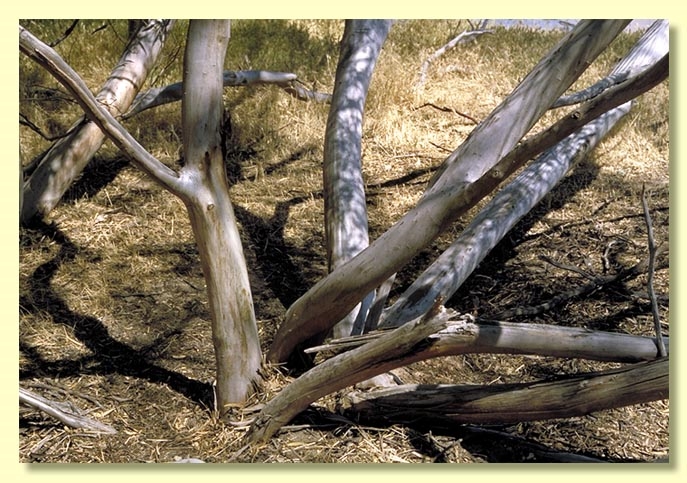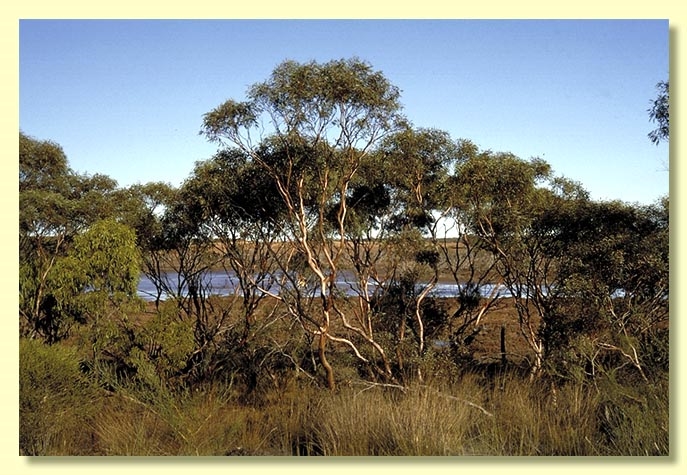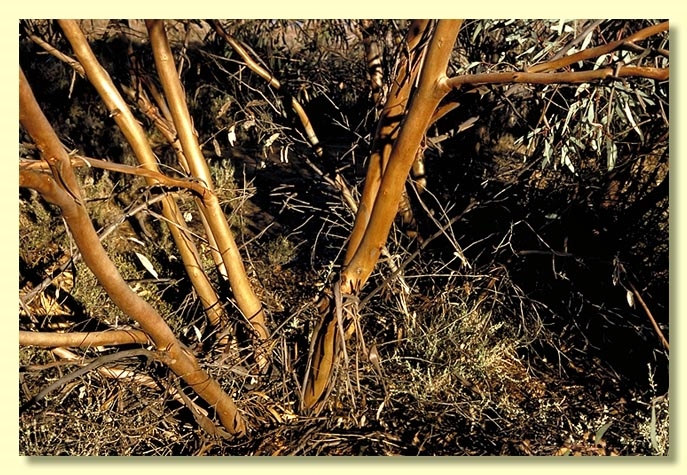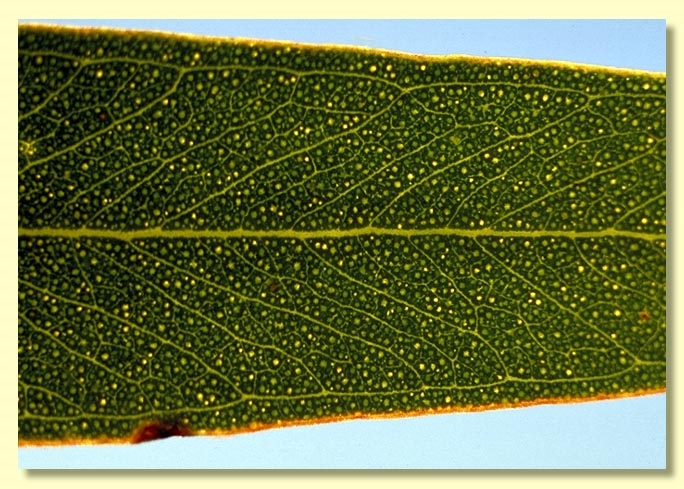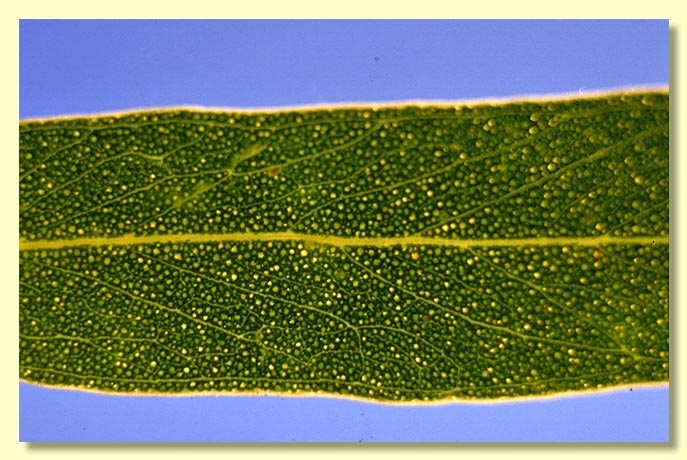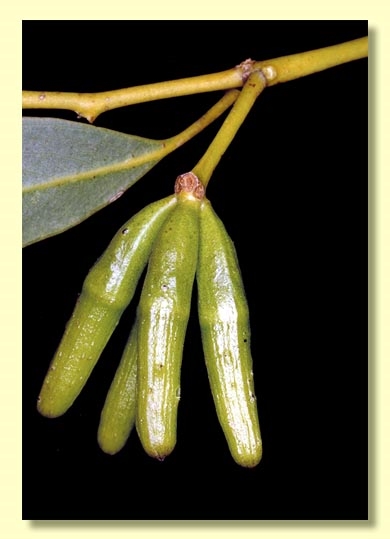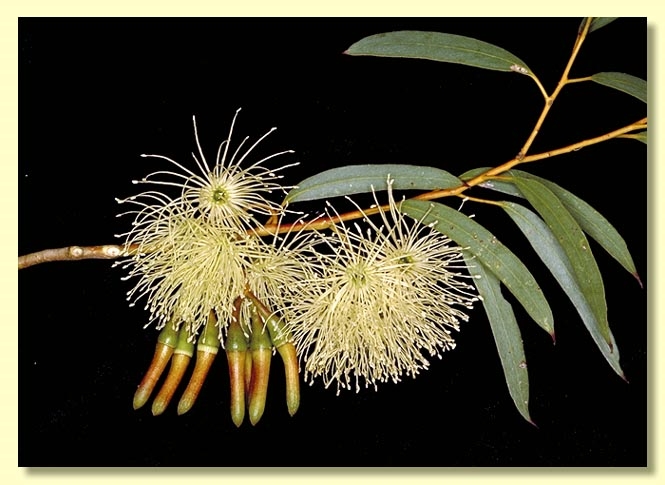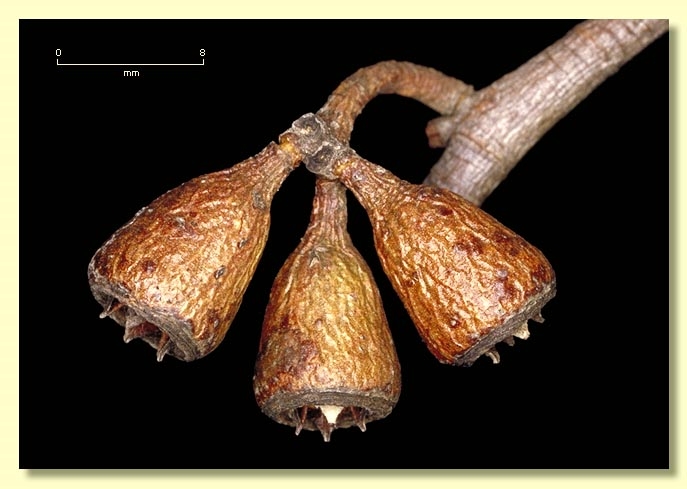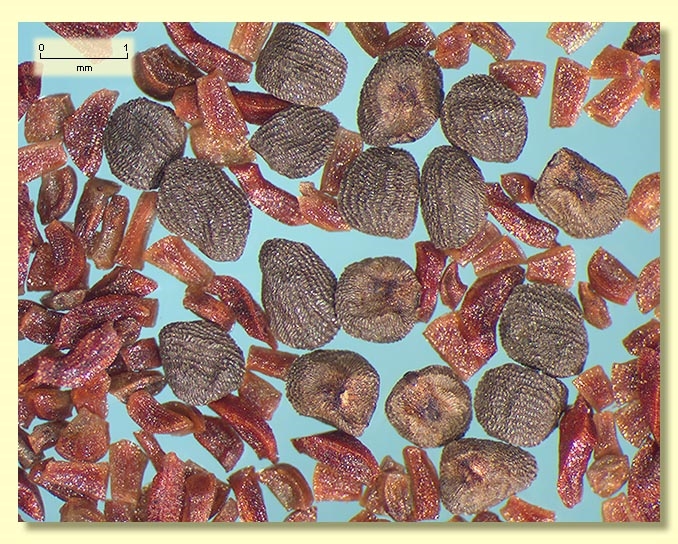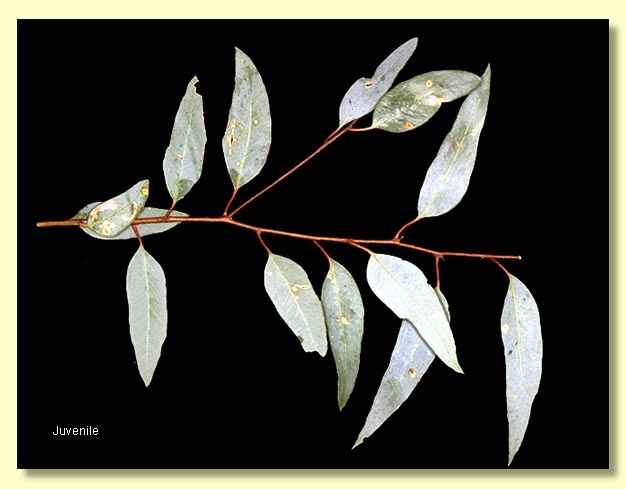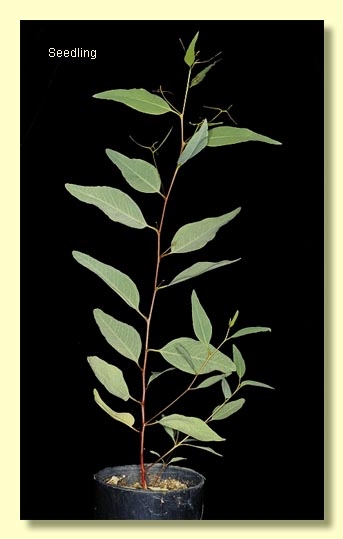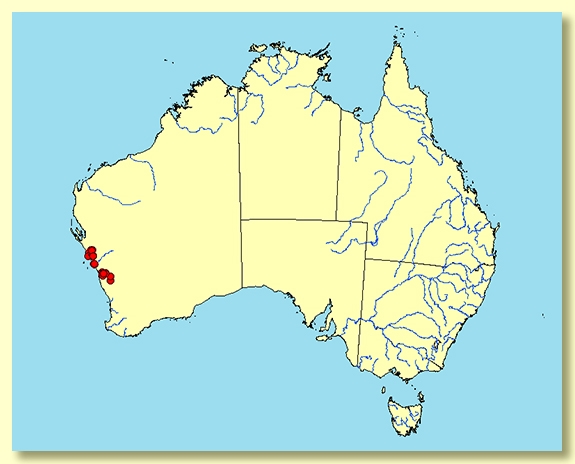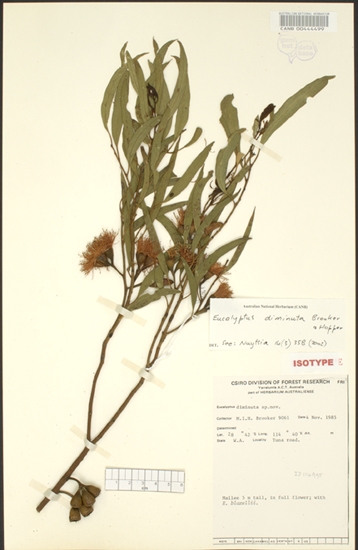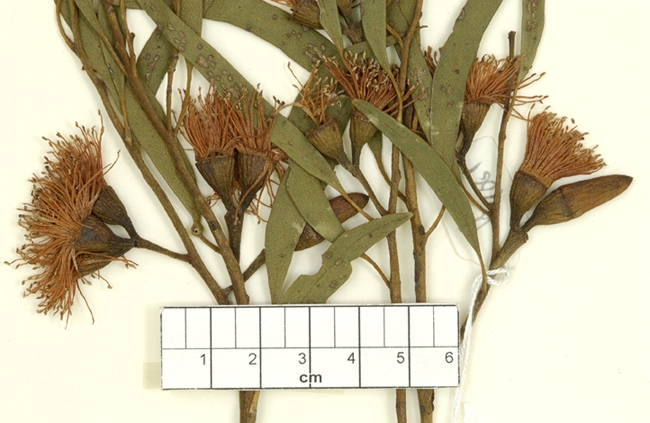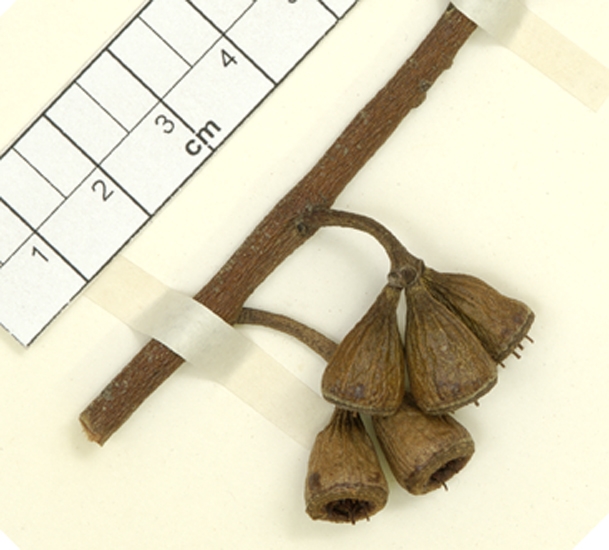Euclid - Online edition
Eucalyptus diminuta
Eucalyptus | Symphyomyrtus | Bisectae | Glandulosae | Erectae | Pedicellatae
Bark smooth throughout, silvery white to greenish grey and coppery, or with a very short basal stocking of rough flaky grey-brown to blackish bark.
Branchlets with oil glands in the pith.
Juvenile growth (coppice or field seedlings to 50 cm): stems rounded in cross-section; juvenile leaves always petiolate, alternate, ovate-lanceolate, 6–9 cm long, (0.8)1.5–3 cm wide, dull, blue to blue-green, sometimes slightly glaucous.
Adult leaves alternate, petioles 0.5–2.6 cm long; blade lanceolate to narrowly so to slightly falcate, 5–11.5 cm long, 0.6–2 cm wide, base tapering to petiole, margin entire, apex finely pointed (like a drip-tip), dull to glossy, green, side-veins acute, reticulation clear, sparse to moderate, intramarginal vein present, oil glands numerous, island.
Inflorescence axillary unbranched, peduncles spreading to down-turned, slender, flattened apically, 1–2.5 cm long, buds 7 per umbel, pedicels 0.1–0.8(1.8) cm long. Mature buds bluntly elongated (1.8–2.7 cm long, 0.4–0.8 cm wide), faintly striate longitudinally to almost smooth, scar present (outer operculum lost early), inner operculum elongated conical to horn-shaped and blunt or narrowed at the tip, longer than the hypanthium, stamens erect, anthers oblong, versatile, dorsifixed, dehiscing by longitudinal slits, style long and straight, stigma blunt, locules (3)4(5), the placentae each with 4 vertical rows of ovules. Flowers creamy white, rarely slightly lemon yellow.
Fruit pedicellate (pedicels 0.3–1 cm long), cupular-obconical to campanulate, 0.7–1.2 cm long, 0.7–1.2 cm wide, disc level at first then descending, valves (3)4(5), held at about rim level or scarcely exserted.
Seeds blackish brown, 0.7–2 mm long, ovoid to flattened-ovoid, dorsal surface clearly and shallowly reticulate, hilum ventral.
Cultivated seedlings (measured at node 10): cotyledons Y-shaped (bisected); stems rounded to square in cross-section, smooth or slightly warty; leaves always petiolate, opposite for ca 5 nodes then becoming alternate, broadly lanceolate, 4–9.5 cm wide, 1.4–3.5 cm wide, dull, green to blue-green, apex rounded or pointed.
Flowering has been recorded in August, September, October and November.
A mallee endemic to Western Australia occurring north and south of Geraldton, known from Eurardy and Binnu well to the north of Geraldton, the Moresby Range north-east of Geraldton, and from near Mindaloo Beacon, Coorow, Three Springs and Yandanooka Nature Reserve south of Geraldton. The bark is usually smooth and the adult leaves slightly glossy, green and conspicuously glandular but the glands not obscuring the side-veins. The buds and fruit are weakly striate to almost smooth.
Eucalyptus diminuta belongs in Eucalyptus subgenus Symphyomyrtus section Bisectae subsection Glandulosae because the buds have an operculum scar, cotyledons are bisected and branchlets have oil glands in the pith. Within this large subsection (ca 80 species) E. diminuta is closely related to a group of mallees and mallets (series Erectae subseries Pedicellatae) recognised by the glossy green leaf surface, leaves with many oil glands but not obscuring the secondary venation, peduncles long and flattened or terete, inflorescences spreading and buds with a long operculum and erect stamens arising from a narrow staminophore.
E. diminuta is most closely related to E. stowardii, a mallee with larger glossier leaves with more conspicuous oil glands, and larger more prominently ribbed buds and fruits. E. diminuta is found on a variety of substrates including sandy soils near soaks and seepages, kaolinitic rubble, or sandstone or lateritic rises. It occurs to the north of the geographic distribution of E. stowardii, a species of decomposing granite sites in the central wheatbelt.
E. diminuta and E. stowardii can be distinguished from E. eremophila and E. tenera by the ribbed or striate, blunt buds on more slender scarcely flattened peduncles, and non-glazed glossy leaves with visible side-veins. E. sargentii, a species of saline depressions, differs from E. diminuta because it has non-striate, more slender buds and (usually) a short stocking of rough bark and narrower juvenile leaves.

